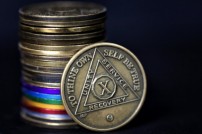
In a recent WBUR interview, Dr. Lance Dodes discussed his new book, which attempts to “debunk” the science related to the effectiveness of 12-step mutual-help programs, such as Alcoholics Anonymous, as well as 12-step professional treatment. He claims that these approaches are almost completely ineffective and even harmful in treating substance use disorders.
What he claims has very serious implications because hundreds of Americans are dying every day as a result of addiction. If the science really does demonstrate that the millions of people who attend AA and similar 12-step organizations each week are really deluding themselves as to any benefit they may be getting, then this surely should be stated loud and clear.




